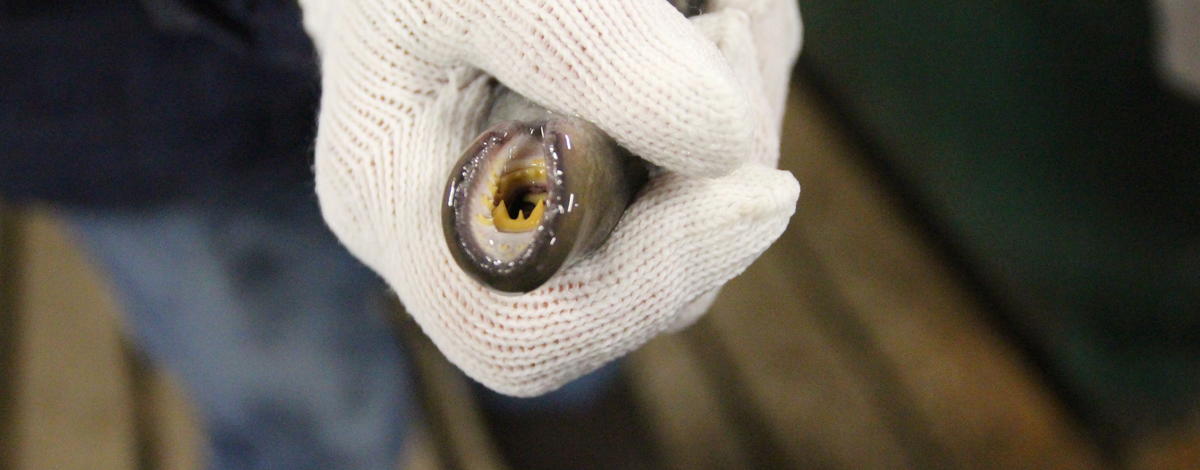Folks that grew up playing and fishing the banks of the Idaho’s salmon and steelhead rivers 50 years ago may remember digging in the sand for handfuls of worm-like creatures they could use as bait. Once very common across the Columbia River basin, Pacific lamprey are native to the Pacific Northwest and have declined substantially, mainly because it is very difficult for them to navigate dams and reservoirs. Unless one knows where to look, most people will not see lamprey in the wild today.
Young fish or larvae known as ammocoetes can spend up to seven years in the sand filtering water for food. They then emerge and migrate downstream in rivers carrying them to the ocean. As they migrate downstream, they change color from dark brown to silver and develop eyes to see. As their body changes, they no longer filter water for food but become parasitic, latching on to other fish or mammals like whales that will provide them with food and also give them a ride as they grow in the ocean. When they are ready, adults make their way back to rivers and streams to spawn before they die, much like salmon except they do not necessarily home in to the specific stream they were born in.
These fish are an important food source in Idaho’s freshwater environments and important culturally and as a food source to tribal communities. Tribal members used to travel long distances to falls and rocky structures like Celilo Falls or Willamette Falls in Oregon to not only fish for salmon but to pick lamprey from the rocks as they try to make their way up to where they will spawn.
Lamprey are not listed in the Snake River basin but because of their precipitous decline, the Nez Perce has developed a translocation program for lamprey populations in the Snake River basin to prevent regional extinction. Adult lamprey that are trapped at Bonneville, The Dalles and John Day dams on the Columbia River are either trucked and released directly into some main stem rivers upstream of Lower Granite Dam during the fall, or taken to the Nez Perce Tribal Hatchery on the Clearwater River where they are cared for through the winter and released the following spring. The Nez Perce Tribe focuses releases in streams where there is historical information documenting their past presence and good habitat to promote future success. The Potlatch River basin is one such place.
For the past couple years, the Nez Perce Tribe and Idaho Fish and Game have collaborated and released adult lamprey into the East Fork Potlatch River near Bovill, Idaho. This year, a new site on Big Meadow Creek near Troy, Idaho was added to the list of Potlatch River tributaries receiving adult lamprey. All the adults were tagged with a passive integrated transponder (PIT) tag before being released. With these tags in place we can document if these fish stayed in the tributaries after release giving us some idea of whether or not they spawned.
Lamprey are being released in these streams because of the active habitat restoration programs occurring there. Both these areas are focal watersheds for habitat restoration that benefits steelhead and lamprey. The new release location in Big Meadow Creek is located upstream of a highway culvert that was modified in 2018 that now provides better fish passage for steelhead and hopefully now lamprey as well.
These efforts are not enough to return lamprey to their historical abundances and distribution, however, the program is working. Researchers from the Nez Perce Tribe and the Columbia River Inter-Tribal Fish Commission’s genetics lab have documented juvenile lamprey being born as part of this effort and recently they documented the first adult lamprey returning up the Snake River which had been born as part of the translocation program.

